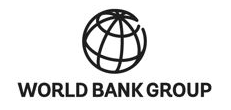Germany, Norway, Sweden and Switzerland announced a US$500 million initiative to help developing countries tackle climate change by transitioning to carbon-pricing mechanisms.
The Transformative Carbon Asset Facility (TCAF) will help developing countries implement plans to cut greenhouse gas (GHG) emissions by providing them with results-based payments for large scale programs in areas such as renewable energy, energy efficiency, low carbon cities and solid waste management.
 30 November 2015: Germany, Norway, Sweden and Switzerland announced a US$500 million initiative to help developing countries tackle climate change by transitioning to carbon-pricing mechanisms. The Transformative Carbon Asset Facility (TCAF) will help developing countries implement plans to cut greenhouse gas (GHG) emissions by providing them with results-based payments for large scale programs in areas such as renewable energy, energy efficiency, low carbon cities and solid waste management. The four countries launched the Facility with the World Bank on the sidelines of the Paris Climate Change Conference.
30 November 2015: Germany, Norway, Sweden and Switzerland announced a US$500 million initiative to help developing countries tackle climate change by transitioning to carbon-pricing mechanisms. The Transformative Carbon Asset Facility (TCAF) will help developing countries implement plans to cut greenhouse gas (GHG) emissions by providing them with results-based payments for large scale programs in areas such as renewable energy, energy efficiency, low carbon cities and solid waste management. The four countries launched the Facility with the World Bank on the sidelines of the Paris Climate Change Conference.
The Facility provides financial incentives for countries to change their behavior to support low-carbon development. For instance, the initiative could provide payments to countries that implement reforms to simplify regulations for renewable energy or to countries that eliminate fossil fuel subsidies. The initiative is also expected to help promote more sustainable cities through supporting more efficient lighting, water and waste management and rewarding countries for implementing green building codes and climate-friendly transport systems.
Norway’s Prime Minister Erna Solberg said the initiative “will help guide the next generation of carbon market programs” in her remarks at the launch. She elaborated that Norway expects “to achieve significant impact on the ground through the facility and ensure the sustainability of reducing emissions even beyond the facility’s initial support, for example, through carbon pricing instruments like emissions trading systems and carbon taxes, or stronger low-carbon policy standards and their enforcement.”
The Facility will “help developing countries transition from planning to implementing mitigation policies using carbon pricing mechanisms, by providing payments for results and, in the process, help achieve their climate objectives,” said World Bank Group President Jim Yong Kim at the launch.
The Facility is expected to support the generation, accounting and payments for emissions reductions at larger scales than have been employed so far, according to the World Bank. The initiative will begin funding operations in 2016 with an initial commitment of over US$250 million. It will remain open for additional contributions until the target of US$500 million is reached. The Facility is also expected to leverage US$2 billion in financing from the World Bank Group and other sources. [World Bank Press Release] [World Bank Feature Story] [World Bank President Statement] [IISD RS Coverage of the Paris Climate Change Conference]